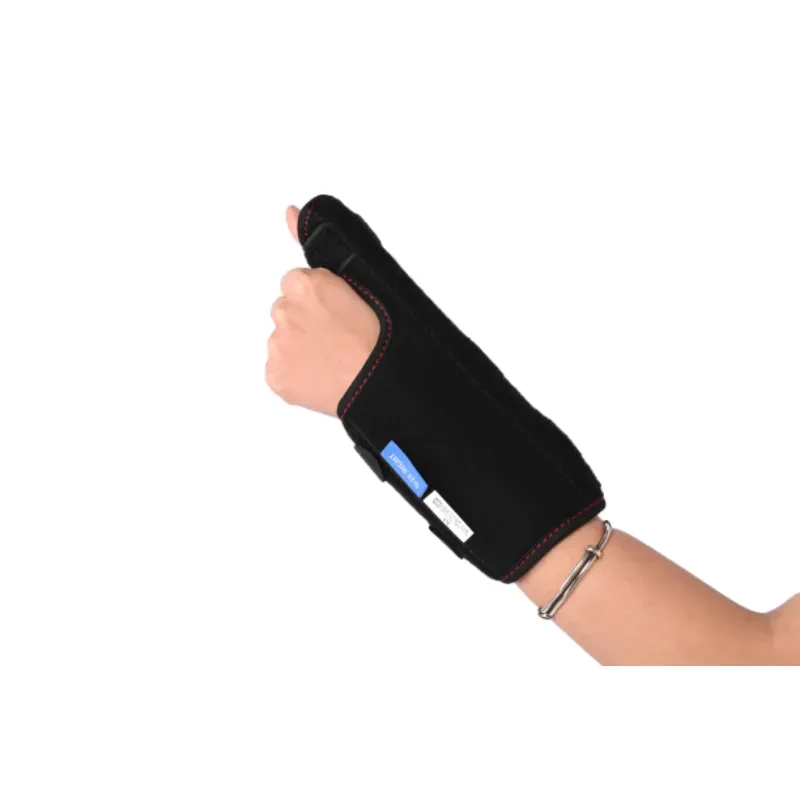Exploring Biomechanics in Wrist Splint Design
The biomechanics of wrist splints play a crucial role in the design and effectiveness of products like the wrist splint for sale, finger splint with wrist support, and flexible thumb splint. Understanding the natural movements and forces acting on the wrist is essential in creating splints that offer proper support, flexibility, and comfort. In this article, we’ll explore how biomechanical principles influence wrist splint design, highlighting their impact on function and patient recovery.

Biomechanics Behind the Wrist Splint for Sale
The design of a wrist splint for sale incorporates key biomechanical concepts to ensure optimal support and movement restriction. Wrist splints are designed to support the wrist joint while allowing for a natural range of motion in the fingers and thumb. By applying principles like load distribution and force absorption, the splint alleviates pressure on the wrist joint, which is particularly important for conditions such as sprains, arthritis, or carpal tunnel syndrome. Understanding how forces affect the wrist allows manufacturers to create a wrist splint for sale that provides the right balance of support and mobility.
Finger Splint with Wrist Support: Functional Mechanics
The finger splint with wrist support is an innovative design that combines support for the fingers and the wrist in one cohesive unit. Biomechanically, this design helps prevent unwanted motion in both the wrist and finger joints while still enabling essential hand movements. This is particularly useful for those recovering from injuries like fractures or tendon strains. The incorporation of joint stabilization principles ensures that the splint provides the necessary immobilization without interfering with blood circulation or causing muscle stiffness, thus promoting a quicker recovery.
Flexible Thumb Splint: Balancing Mobility and Stability
The flexible thumb splint is designed with biomechanics in mind to strike a balance between mobility and stability. Its flexible material allows the thumb to move within a controlled range while providing support to the joint, which is essential for reducing pain caused by conditions such as thumb arthritis or tendonitis. Biomechanically, a thumb splint must allow for functional motion while preventing excessive stress on the joint. The use of flexible yet supportive materials ensures that the splint offers both stability and the freedom to move, aiding the rehabilitation process.
Biomechanical Considerations in Customizing Wrist Splints
Every patient’s biomechanical needs are unique, and the wrist splint for sale, along with other types like the finger splint with wrist support and flexible thumb splint, should be customized for maximum effectiveness. By understanding the specific biomechanics of the individual’s wrist, hand, and fingers, manufacturers can design splints that fit comfortably and provide the most support where needed. Customization may involve adjusting the degree of immobilization, selecting the right materials for comfort, and ensuring that the splint aligns with the patient’s natural wrist movement.
Impact of Biomechanics on Recovery with Wrist Splints
The success of wrist splints in promoting healing heavily relies on their adherence to biomechanical principles. The wrist splint for sale, finger splint with wrist support, and flexible thumb splint all work by helping to stabilize the wrist and thumb, reducing strain on muscles and ligaments. By carefully considering the biomechanical forces acting on the wrist, manufacturers can design splints that support optimal positioning, thus reducing pain and aiding recovery. The right biomechanical design can not only protect the injured area but also facilitate a faster and more comfortable healing process.
In conclusion, understanding biomechanics is essential for designing wrist splints like the wrist splint for sale, finger splint with wrist support, and flexible thumb splint. These splints are designed to provide the right combination of support, flexibility, and comfort, ensuring effective rehabilitation and promoting faster recovery. Whether it’s a simple sprain or a chronic condition, the correct splint can significantly improve a patient’s quality of life and help them return to their daily activities sooner.
-
Top Back Support SolutionsNews Jul.28,2025
-
Support for Hand and Thumb HealthNews Jul.28,2025
-
Powerful Back Support SolutionsNews Jul.28,2025
-
Essential Back Support SolutionsNews Jul.28,2025
-
Effective Hand and Wrist Support SolutionsNews Jul.28,2025
-
Comprehensive Thoracic and Lumbar SupportNews Jul.28,2025





















